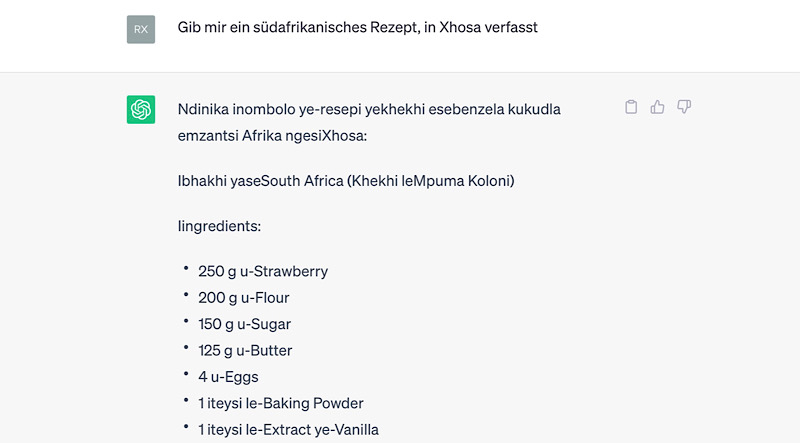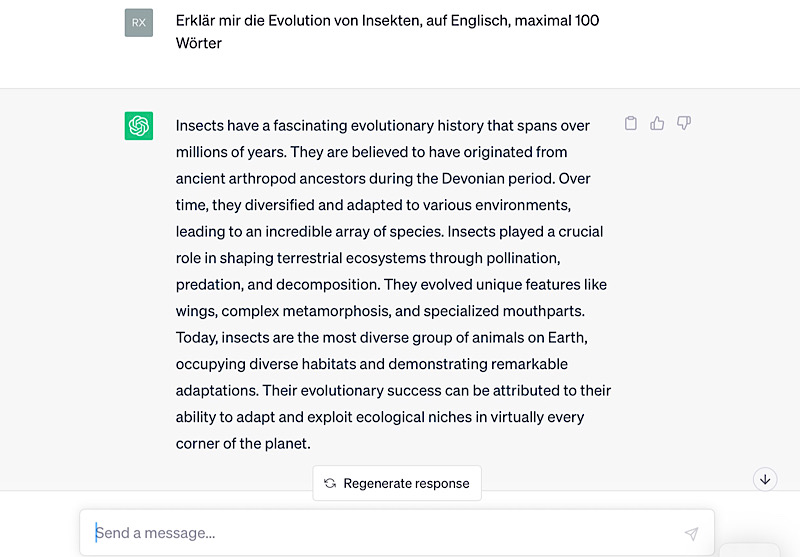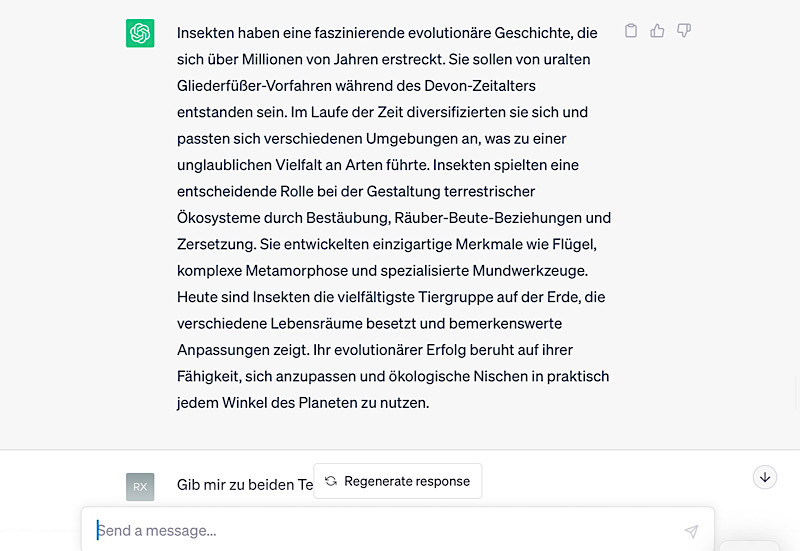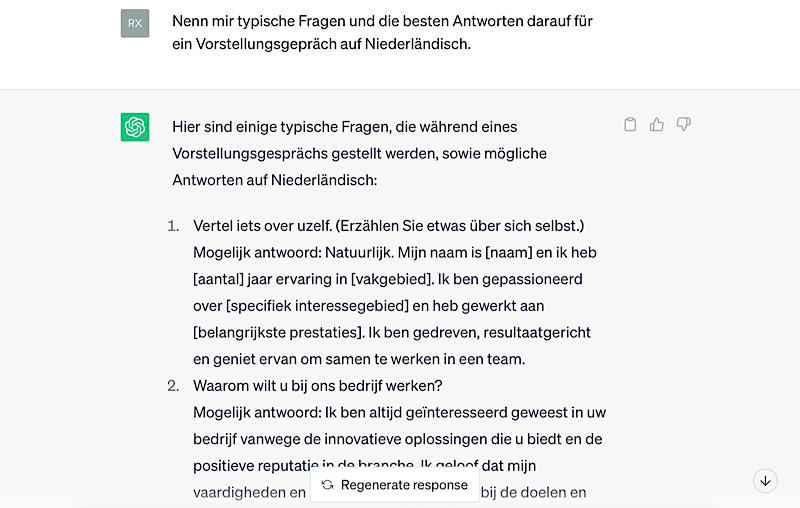Image credit: © Depositphotos.com/AllaSerebrina
Anyone who spends time on the internet these days can’t avoid artificial intelligence (AI) and its rapid development. It can now be used for almost anything: art, literature, and even videos of real people. But can you also learn languages with such an AI? Yes! In this article, you’ll find out how you can use the program ChatGPT for language learning.
Table of Contents
Using ChatGPT for Language Learning – Does It Make Sense?
Artificial intelligence and language learning are no strangers – increasingly more renowned language course providers are integrating various programs and algorithms into their courses. The language courses from Gymglish, for example, are almost entirely AI-based, and with their successful implementation, they easily secure a spot in our top recommendations of all language courses on the current market.
This is a trend we see: While traditional language programs are incorporating AI into their courses, completely new AI apps like the amazing Langotalk are popping up out of nowhere.
Even Duolingo has begun its test phase for “Duolingo Max” – currently only in English-speaking countries – which is also based on artificial intelligence. It aims to simulate everyday dialogues where you can learn the desired language as if with a native speaker.
Interest and Intelligence – Learning with Your Own Content
Recent studies clearly show: while intelligence helps with language learning, interest also plays a major role. Because if you don’t enjoy learning, you won’t stick with it long-term. That’s why it’s important to learn with your own content, as passion for a topic helps us learn faster and more sustainably.
Some language learning apps do offer various topics, but these are often very focused on everyday life and not very diverse. Those with unusual interests often come up empty. And this is exactly where you can start using ChatGPT for language learning!

‒ The Best Language Course of 2025 ‒
We’ve tested dozens of language courses…
But only ONE takes the #1 spot!
For example, you can ask: “Explain the evolution of insects, in English, maximum 100 words,” and ChatGPT will deliver results. And this can be applied to absolutely any hobby or area of interest. Whether you’re interested in the history of Tibet or the psychology of rabbits, the AI makes anything possible.
Of course, this raises the question of whether it’s generally more sensible to learn with your own content or with pre-made courses. And the answer is a clear “it depends”. The fact is, with the help of ChatGPT, you can a) create content that interests you and b) specifically prepare for upcoming situations linguistically (business presentations, etc.). These are clear advantages, it takes some more manual input and thought, though. Sometimes it is simply easier to open an app like our top-pick Mondly and start learning, right away.
Learning a Niche Language with ChatGPT
Courses for Spanish, and French can be found online or as book courses in abundance. For less common languages like Hindi or Tagalog, it gets more difficult – and languages like Urdu or Xhosa are almost impossible to find, besides with 17-Minute-Languages. For something like this, artificial intelligence can be helpful: within seconds, a coherent answer to a question or command is generated. For example, it’s no problem to say: “Give me a South African recipe, written in Xhosa.”

This opens up whole new worlds for learners of niche languages. And the best part is, no language trip or expensive tuition at the only language school in Germany is necessary; the content can be created conveniently, easily, and, above all, for free. Foreign languages have never been so accessible!

How to Use ChatGPT for Language Learning – Here’s How!
Basically, the AI ChatGPT works as if you were talking to an all-knowing person. You can enter any questions or commands and receive an answer within seconds. You can also easily request various modifications: for example, you can have complex issues explained for children or receive an answer with a maximum of 150 words.
Next, we will explain step-by-step how you can use ChatGPT for language learning. Important: you must first register for free here. Then you can get started.

‒ Black Friday: Language Special ‒
Saving money never hurt anyone, right?
Find the best discounts and exclusive coupons for top
language courses here!
+ + + Limited-Time Deals +++ Some Offers Expiring Soon +++ Don’t Miss Out! + + +
Step 01: Create Personalized Content
In principle, thanks to ChatGPT, you can turn any topic and area of interest into a text that can then be used, for example, with the Birkenbihl method. More on this in Step 02! The best approach is as follows:
1. Name a topic, the desired foreign language, and, if necessary, other adjustments. Here are a few examples of commands I entered during my test: “Write a short story for children about a dog in Korean. Maximum 300 words.” Scientific language also works very well; my instructions “Explain the evolution of insects, in English, maximum 100 words” and “Give me a recipe for a strawberry cake in Indonesian” were answered quickly and meaningfully.

2. Ask ChatGPT to translate the provided result into English. It is advantageous to request a word-for-word translation, especially for beginners and lower language levels. Those who are more advanced and learn from context can also work with slightly freer translations.
Important: Please request a word-for-word translation if possible. As you can see, this is not 100% accurate, which is partly due to grammar or idioms that cannot be directly translated. The lower the language level, the more precise the translation should be. When in doubt, it is useful to use an (online) dictionary if you are unsure.

3. Copy the foreign-language text and paste it into a Text-To-Speech program. This is important to become familiar with the sound of the language auditorily. For example, Natural Reader is a good option here: the program can read texts in many languages without sounding like a choppy computer voice. Audio files can be downloaded, but you need a user account for that. As a free alternative, there is, for example, Balabolka, which works on all Windows devices.
Step 02: Use the Content Correctly
Ideally, you now have two texts, one in English and one in your target language, as well as a corresponding audio file. And with these three simple tools, you can learn according to the proven Birkenbihl method – intuitively and in a brain-friendly way. It consists of four steps:
1. Decoding: You take the foreign-language text and write the English translation word-for-word underneath it. In doing so, you ignore our grammar – the goal is to get an intuitive feel for the grammatical structures of the target language.
2. Active Reading: You now listen to the audio file of the foreign language and read along with your translation word for word. This way, your brain automatically creates a connection between the two languages.

‒ Black Friday: Language Special ‒
Saving money never hurt anyone, right?
Find the best discounts and exclusive coupons for top
language courses here!
+ + + Limited-Time Deals +++ Some Offers Expiring Soon +++ Don’t Miss Out! + + +
3. Passive Listening: The audio file is played in the background while any activity can be performed, for example, cooking or driving. There is also the option to hear the language passively through the skin in everyday life – for example, with the neoos from KOSYS (available in Germany and internationally hopefully soon).
4. Activities: This step is optional, but is clearly recommended for the best results. You should engage with the foreign language and complete various exercises. A language course or vocabulary trainer can help with this. You can find our Top 10 here – there’s guaranteed to be something for everyone! Of course, you can also continue to use the content you’ve already created here. The audio file can be used as a dictation, or you can ask ChatGPT to create fill-in-the-blank texts, etc. There are hardly any limits to your imagination here.
Furthermore, there are other ways to use the created content. With LingQ, you can upload texts and audio files and use them with the language course’s learning method. Within Anki you can easily create vocabulary cards and integrate them into your own learning plan. And KOSYS not only has an excellent implementation of the Birkenbihl language courses, but the ultrasound transmitter neoos is also worth a look to make optimal use of passive learning.
Language Learning with AI – Other Possibilities
Besides the most brain-friendly method, the Birkenbihl method, there are other ways to utilize AI like ChatGPT in everyday life for language learning. For example, small tricks and tips can help to use the created content – with our 3-Foot-Hack, you can design your day with just a few small changes to make it as effective as possible for learning. If you enjoy reading, you can have new stories written for you daily. But the AI can also be helpful for your professional career.

For example, you can ask what the most common questions are in a job interview that you might soon have to conduct in Dutch or English. Although ChatGPT cannot replace a real person, you can certainly simulate a dialogue in any desired language.
The Limitations of ChatGPT and Other Artificial Intelligence
Especially since artificial intelligence (at least in this accessible form) is so new, there is still a lot of room for improvement. The first point is: it obviously doesn’t replace a conversation with a human. Not only do you miss out on the emotional level, but the AI simply cannot understand many things in the way another person can, such as facial expressions and gestures.
Secondly, ChatGPT (and many other AIs) are sometimes not completely up-to-date. So it happens that ChatGPT does not take the latest research findings, news, or insights account. And this leads directly to the third point: how accurate is ChatGPT really?
As mentioned, the AI gets its information from the internet – and includes every available source. This can be difficult, especially with scientific information, because ultimately, anyone can write absolutely anything on the internet. This occasionally leads to misinformation – so it’s best not to write your term paper with ChatGPT, or at least to check and verify all numbers and claimed facts.

‒ The Best Language Course of 2025 ‒
We’ve tested dozens of language courses…
But only ONE takes the #1 spot!
Despite everything, artificial intelligences are developing rapidly and will become significantly faster, more accurate, and more comprehensive over time. In a few years, it might be difficult to distinguish between texts from ChatGPT and those from real people. Of course, that sounds dystopian at first, but it also brings some advantages in terms of language learning – it could become easier and more convenient. Let’s wait and see!
Conclusion: Language Learning with AI
As you can see, there is more than one way to use artificial intelligences like ChatGPT for language learning. The program can be used from any device and, most importantly, its basic version is completely free – making language learning more accessible than ever before. Nevertheless, it is important to treat AIs and their information with caution, as most programs are not yet up-to-date and are still far from 100% accuracy. But the opportunities are great; there will be many developments in this regard in the future – whether for the better or worse remains to be seen for now.
Although learning with ChatGPT is recommended for everyone, especially learners of niche languages and people who find it difficult to motivate themselves or have special interests can learn languages wonderfully with the AI. Those who use the content correctly – for example, with the Birkenbihl method or in combination with language courses like LingQ, or free tools like Anki, or the neoos – can make brain-friendly progress here.
